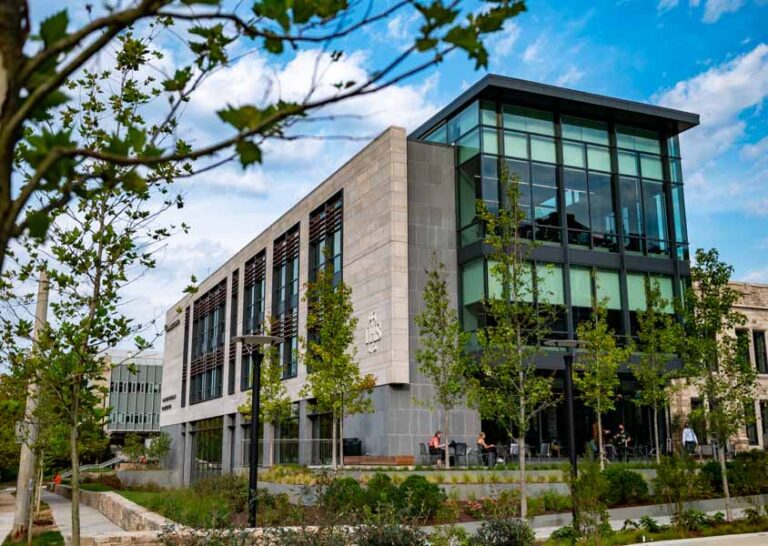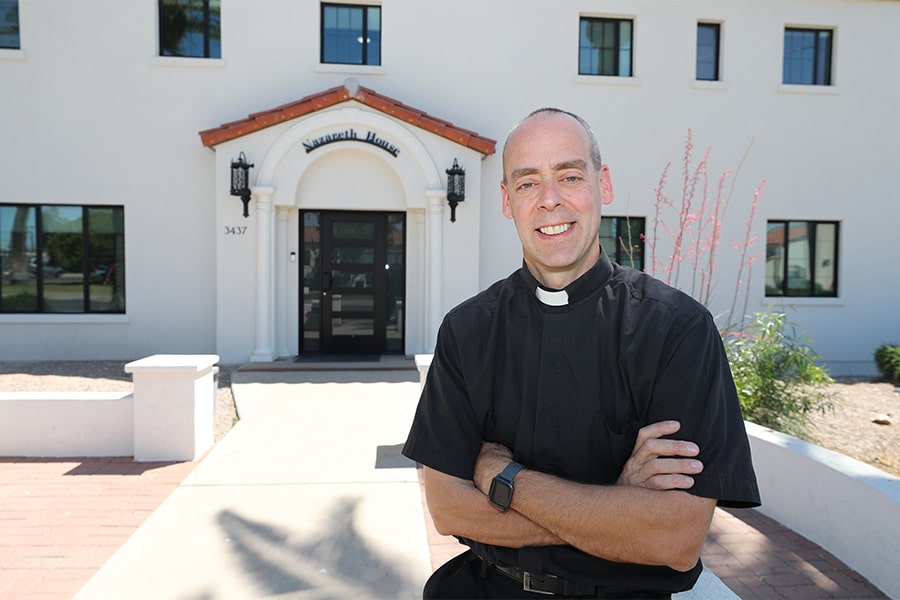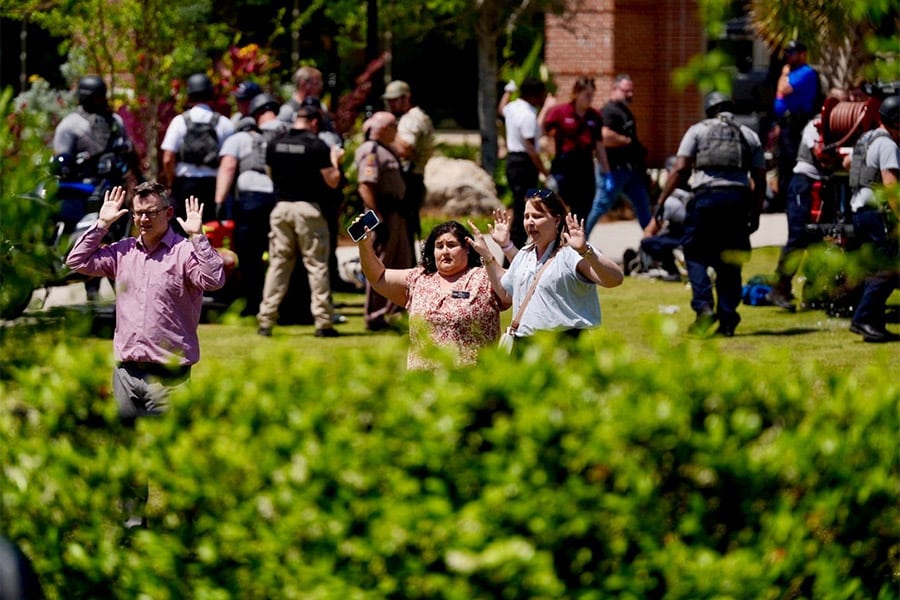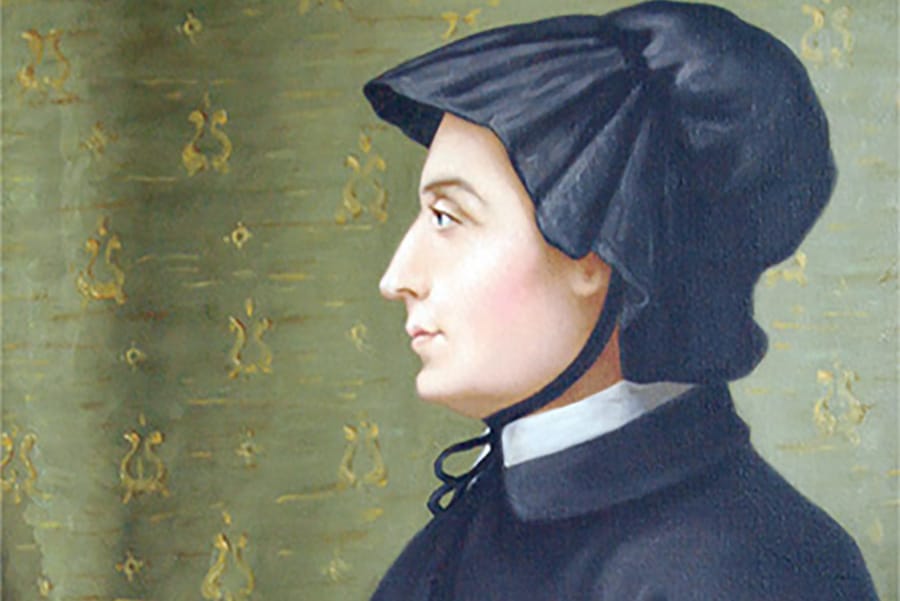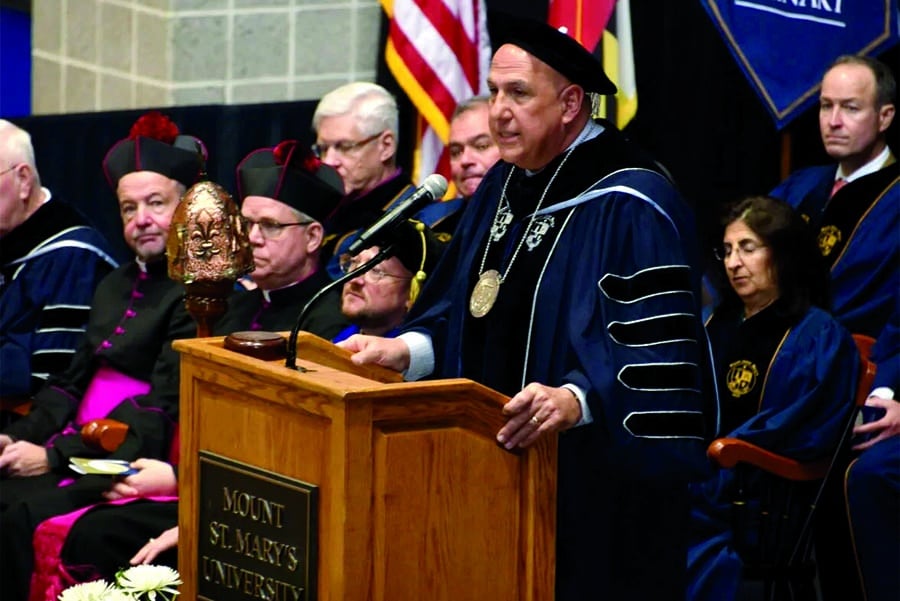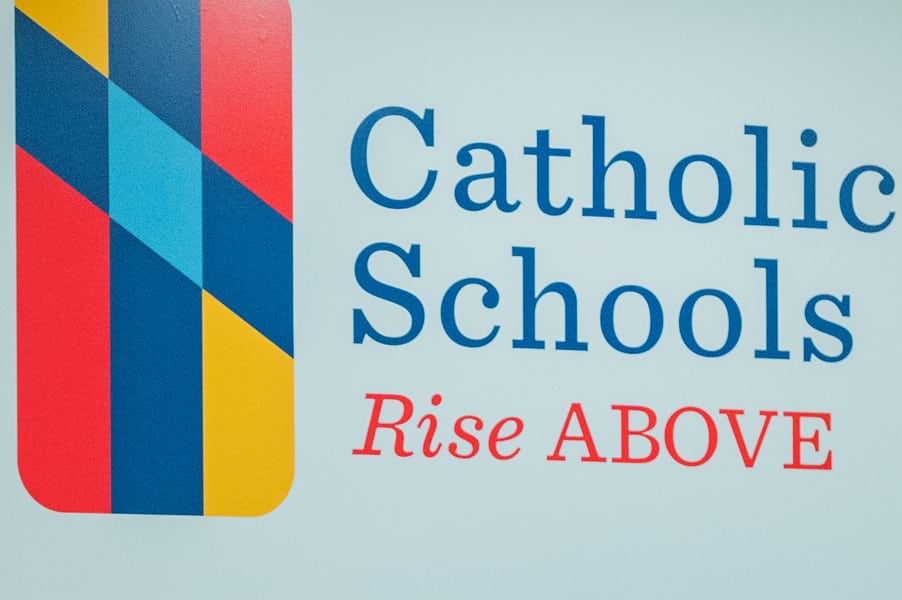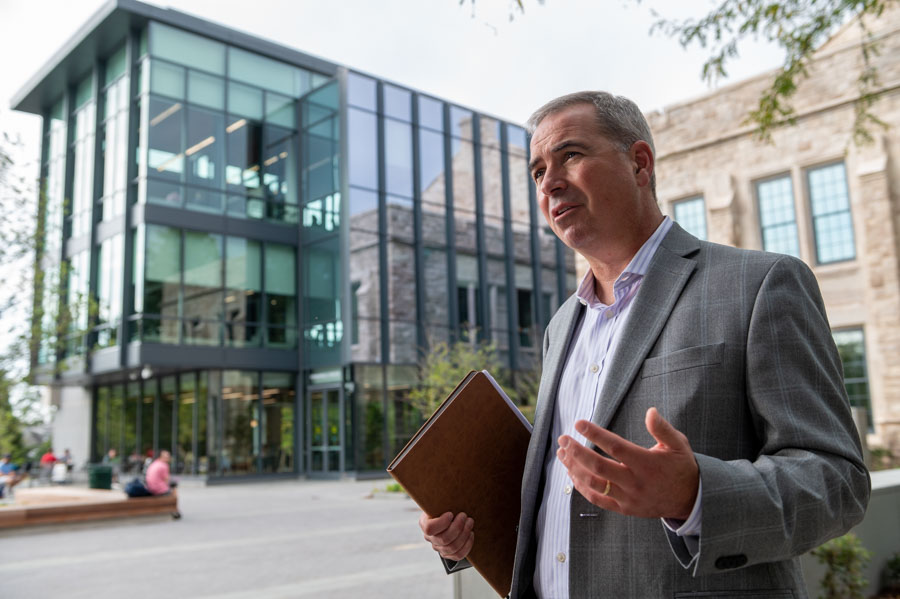
With most of its buildings oriented toward a traditional central courtyard known as the “quad,” Loyola University Maryland has long had a feeling of being sealed off from the city that surrounds its Evergreen campus in north Baltimore.
With the recent opening of the Miguel B. Fernandez Family Center for Innovation and Collaborative Learning, that’s all changed in a big way.
Unlike the other buildings at Loyola, the Fernandez Center faces the city along Coldspring Lane. The space surrounding it is mostly open so that passersby can now see more easily onto the main campus. There’s even an outdoor classroom on one side of the building that physically brings students and faculty closer to their city neighbors.
“If someone would have asked in the past where Loyola’s front door was, I’m not really sure what I would have told them,” said Terrence Sawyer, Loyola’s senior vice president. “Well, this is it. We really wanted to symbolize the commitment we have had to the city from the time of our inception.”
The 35,000-square-foot Fernandez Center was erected over the last 18 months at a cost of more than $40 million. It is named in honor of Miguel B. Fernandez, a former Loyola board member and Miami-based entrepreneur, whose foundation made a major contribution to the project along with other donors and the State of Maryland.
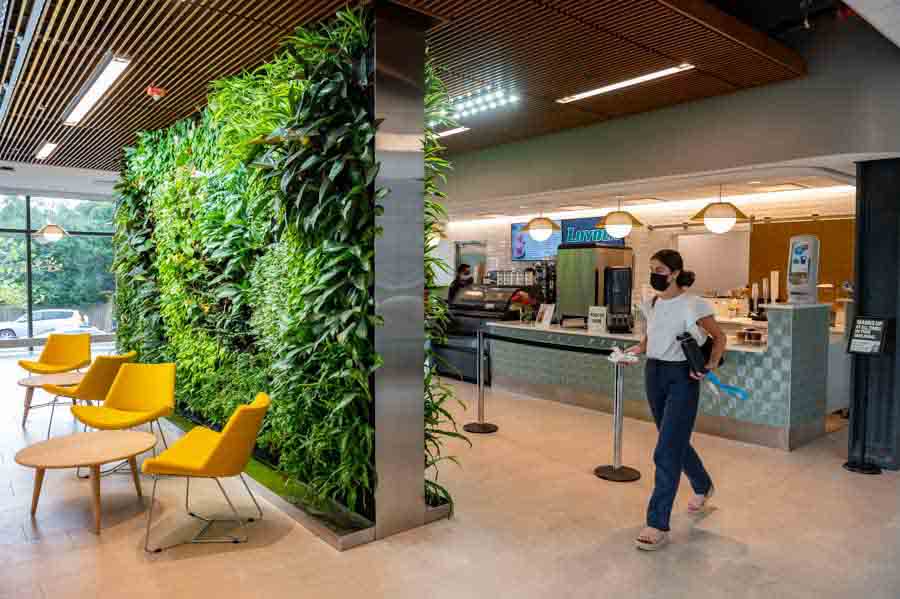
The new building, an airy structure designed by Shepley Bullfinch, is attached to Beatty Hall, a previously existing academic building whose interior was completely reimagined as part of the project.
Establishing a place on campus where students can study and work together in a more collaborative way was the major goal behind the effort, Sawyer said.
The Fernandez Center features “active learning classrooms” that include open spaces. Tables throughout the building are made of white board material so students can jot down ideas right on the tabletop. There’s also a “Forbes Idea Lab,” surrounded by whiteboards to encourage brainstorming. An academic loft on the top floor provides collaborative space for faculty and students from different disciplines to work together.
“We wanted an environment where sociologists and natural scientists and political scientists and economists are coming together to talk about major questions like why is there poverty in America and other heady questions we want our students to grapple with,” Sawyer said.
When students are siloed into different areas and majors, it can be difficult to arrive at holistic responses to problems, he said.
“This building is a physical manifestation of having different disciplines come together,” Sawyer said.
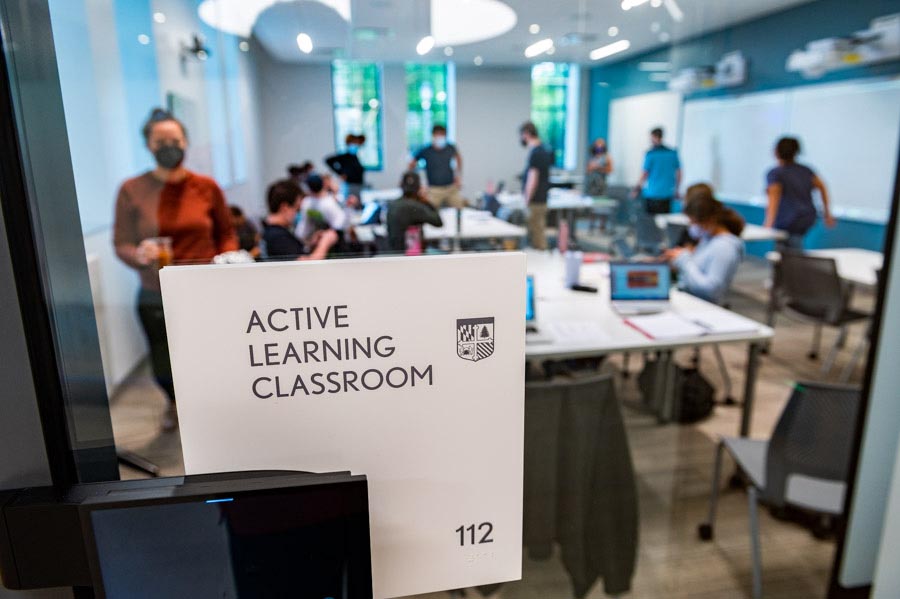
Jeffrey E. Barnett, a professor of psychology at Loyola who was a faculty representative involved in giving advice on the design of the building, said psychology students are already using space for therapy training and working with mock clients.
“We’re able to move everything in the classrooms around very easily and quickly so students can share ideas with one another more easily,” he said. “Throughout the building, there are so many places for students to interact informally.”
The building includes new offices for faculty in the psychology, speech-language-hearing sciences, sociology and education departments. There is also a graduate commons, a shared area for graduate students.
Alex Brune, a 19-year-old sophomore communications major, said he spends almost all his time inside the new building. On a recent morning, he hung out in the “Green and Gray Café,” a new dining area inside the Fernandez Center that features a large “living wall” made up of green plants.
“All my friends and I are in here constantly because we can work collaboratively, and also just sit together in a space that’s modern and inviting,” said Brune, a graduate of Calvert Hall College High School in Towson, who used drones in making a promotional video about the Fernandez Center. “I don’t think there’s any other space on campus as nice as this – where all you want to do is go into this space.”
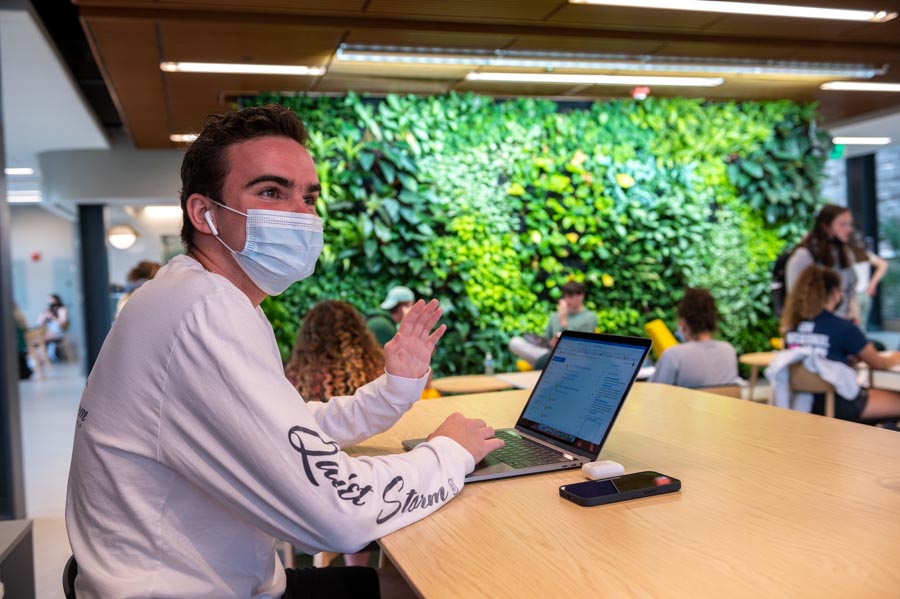
Space for Loyola’s career center was dramatically increased inside the Fernandez Center. The Rizzo Career Center is located on two levels, with a lounge and rooms for employers to interview students. The center doubled the size of its “student ambassador team” to accommodate more drop-in visits from students and alumni.
“We went from the career center being like a doctor’s office to now being like the Apple store,” Sawyer said.
Sawyer noted that career planning at Loyola is not reserved for seniors, but encouraged from the time freshmen step on campus.
“We do a fantastic job of not just finding kids jobs, but allowing them to marry their talents and what brings them joy to what the world needs,” he said. “It’s a four-year discernment process.”
The Fernandez Center includes a 2,100-square-foot green roof garden and other environmentally friendly features such as efficient lighting and air purification systems.
The heavy wooden doors that once served as the entranceway to Beatty Hall now hang on the inside walls as a tribute to the past. The Jesuit university is also planning to use wood from an oak tree removed from the campus to craft crosses for the classrooms, according to Rita Buettner, director of university communications.
Email George Matysek at gmatysek@CatholicReview.org
Also see
Copyright © 2021 Catholic Review Media

